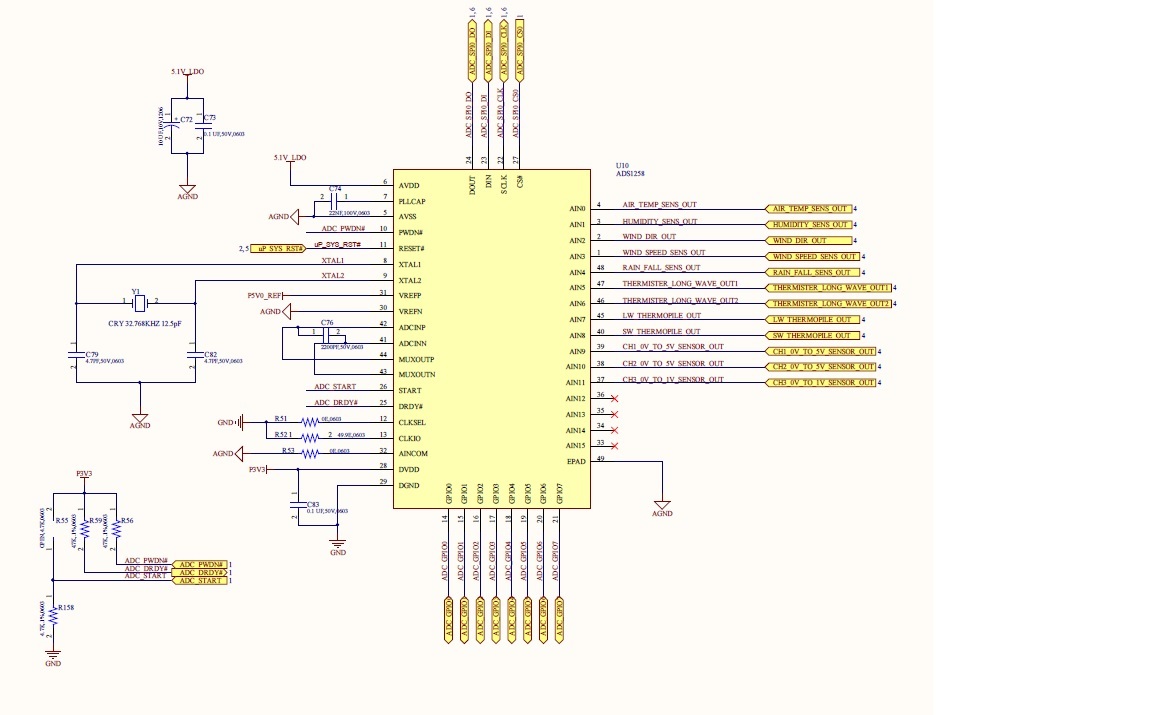Other Parts Discussed in Thread: REF5025, REF5050
Hi,
We are using ADC (ADS1258) for one of our project.we have following doubts
1) Our ADC signal input is single ended and voltage level is 0-5V. We are giving VREFP is 5V through LDO (REF5050AIDGKR). Is it correct or need te give +2.5V and -2.5V as a ref voltage
for your reference we are attaching our schematics.
2)External Chopping is require or what we connected is correct?
3) My ADC input signal is uni polar (0-5V) and i given VREFP is +5V and VREFN is GND. I would like to utilise full bandwidth of ADC Scale in straight binary format (000000h to FFFFFFh). How to use this configuration.
Please verify this schematics and Can you give me clarification



